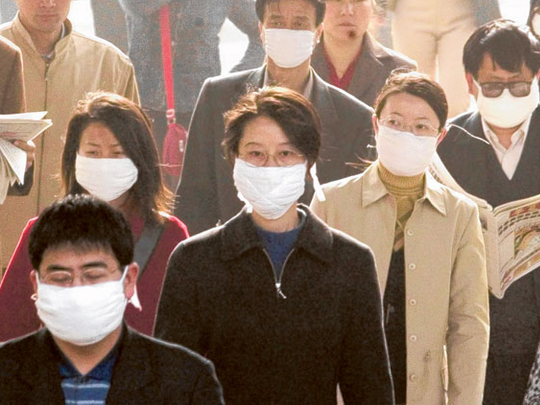
New York: The global cost of the coronavirus could be three or four times that of the 2003 Sars outbreak that sapped the world’s economy by $40 billion, according to the economist who calculated that figure.
The sheer growth in the Chinese economy over the last 17 years means the global health emergency triggered by the coronavirus outbreak has far greater potential to gouge global growth, according to Warwick McKibbin, professor of economics at the Australian National University in Canberra.
“It’s just a mathematical thing,” McKibbin said in a phone interview. “Most of the GDP loss that we saw in the Sars model, and in reality, was China slowing down. And so, with China much bigger, you’d expect the billions would be much bigger.”
While difficult to pinpoint a precise cost as the crisis is still unfolding, the impact will be experienced mostly through changes in “human psychology,” he said. “Panic is what seems to be the biggest drain on the economy, rather than deaths.”
Markets have been whipsawed by panic, Paris-based Amundi Asset Management said in a January 29 note. Chief Investment Officer Pascal Blanque and his deputy Vincent Mortier said the novel coronavirus provided the trigger for a pause in a stock market rally that began in October.
McKibbin’s forecasts are in line with those of other analysts.
Nomura International Ltd. expects the blow to China’s growth could exceed that seen during the Sars outbreak. Real GDP growth in the first quarter could “materially drop” from the 6 per cent pace in the fourth quarter, maybe by even more than the 2 percentage point deceleration seen in the second quarter of 2003 from the first, Nomura economists led by Lu Ting wrote in a report to clients.
What Bloomberg’s Economists Say...
“Back in 2003, China accounted for just 4 per cent of global GDP. Fast forward to 2020, and its share has increased to 17 per cent. That means the global spillover if China’s growth slumps will be larger.”
“Hong Kong stands out as the most exposed - our simulation shows a hit of 1.7 ppts in the first quarter. South Korea and Vietnam would also suffer, each slowing by 0.4 ppt. Japan would take a 0.2 ppt hit.”
More contagious than Sars but less deadly, the insidious nature of the coronavirus, dubbed 2019-nCoV, is such that it often presents as mild cold-like symptoms and can go undetected, which could potentially protract out the crisis for longer than the 2003 epidemic.
The new virus, which emerged in central China in late 2019, is reported to have infected almost 10,000 people in two months, eclipsing the 8,096 Sars cases reported from November 2002 through 2003, when the contagion spread from China across Southeast Asia and to North America and Europe.
“If a country had a bad epidemiological outcome, then their shocks were likely be a lot bigger than countries that were able to control it well,” McKibbin said, referring to his findings from examining the impact of Sars.












